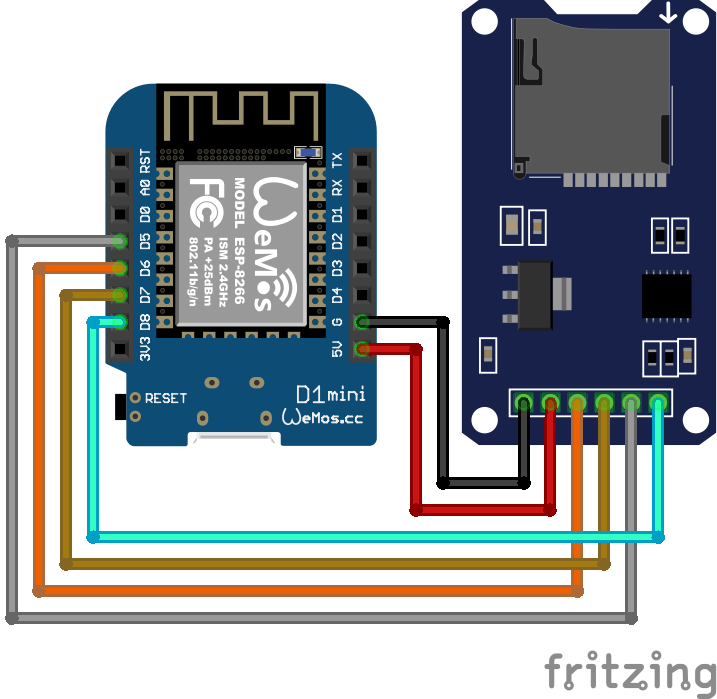

- #INTERUPTS SPI ARDUINO DUE SD CARD HOW TO#
- #INTERUPTS SPI ARDUINO DUE SD CARD SERIAL#
- #INTERUPTS SPI ARDUINO DUE SD CARD UPDATE#
- #INTERUPTS SPI ARDUINO DUE SD CARD SOFTWARE#
- #INTERUPTS SPI ARDUINO DUE SD CARD CODE#
* Copies accumulated data and returns the number of new data items. Majenko at 19:40 I am not familiar with the internal workings of the Due SPI library to be sure though.

#INTERUPTS SPI ARDUINO DUE SD CARD UPDATE#
You should have the SPI operations outside the interrupt and just update some variables and set a flag in your interrupt.
#INTERUPTS SPI ARDUINO DUE SD CARD SERIAL#
It has 54 digital input/output pins (of which 12 can be used as PWM outputs), 12 analog inputs, 4 UARTs (hardware serial ports), a 84 MHz clock, an USB OTG capable connection, 2 DAC. It is the first Arduino board based on a 32-bit ARM core microcontroller. Timer.begin(callback, 20000) // Start callbacks // 1 1 1 Probably SPI transfers use an interrupt, which can't trigger because you're already in an interrupt. The Arduino Due is a microcontroller board based on the Atmel SAM3X8E ARM Cortex-M3 CPU. I have seen various warnings in threads about calling functions and using Serial.print though, oops!Ĭode: /******************** Accelerometer header ********************/ Never seen a crash while not recording to SD. Using the popular Arm Cortex-M0 32-bit SAMD21 processor, it also comes with a micro SD card holder with dedicated SPI interfaces.
#INTERUPTS SPI ARDUINO DUE SD CARD SOFTWARE#
MOSI MISO SCK SS(slave) SDA SCL Uno 11 12 13 10 A4 A5 Due 4 1 3 - 20 21 Software Serial: The Due cannot use the. This board is based on a powerful 32bit CortexM3 ARM microcontroller made programmable thro.
#INTERUPTS SPI ARDUINO DUE SD CARD CODE#
I don't suspect this code of any wrong doing as this always runs while not recording to SD. SETUP GUIDE GET STARTED Main Features The MKR Zero board is a great board for getting started with various music projects. The Due is Arduinos first ARM-based Arduino development board. * Respond to volatile data changes outside the interrupt.Īdjust = adjustment // Un-interrupted copy //Īdjustment = 0 // Clear volatile data //Īccel.adjust(adjust) // Adjust accelerometer timing // The serial peripheral interface (SPI) allows half/ full-duplex, synchronous. It is possible to switch the interface from SPI to I2S by software. By default, it is the SPI function that is selected. Serial.println("*** Synch Event! ***: " + String(ms)) the STM32 SPI interface provides two main functions, supporting either the SPI protocol or the I2S audio protocol. * ms the millisecond adjustment required to accelerometer timing. * Volatile callback function for time synchronisation success. Volatile int adjustment = 0 // Millisecond shift in GPS to clock timing // Volatile bool volatile_sync = false // PPS time synchronisation is complete // Int offset = time_ms_offset // Copy data: don't allow modification while copying // * the synchronisation offset in milliseconds. Formatting Your SD Card Using Linux Interfacing the Arduino with an SD Card. * Returns the current synchronisation offset from system time to UTC time. Building and Testing a Hardware - Debounced Button Interrupt Circuit. Self->callback(adjust) // Request a shift in accelerometer timing // Int adjust = self->time_ms_offset - offset Uses the latest timestamp to calculate the real time to system time offset. * Static time synchronisation interrupt function.
#INTERUPTS SPI ARDUINO DUE SD CARD HOW TO#
PinMode(pps_pin, INPUT) // GPS time pulse //ĪttachInterrupt(digitalPinToInterrupt(pps_pin), synchTime, RISING) // Using default priority - don't know how to set to higher priority! // SPI devices communicate in full duplex mode using a masterslave architecture usually with a single master (though some Atmel and Silabs devices support. To write and read from the SD card, first you need to include the SPI and SD libraries. It has 54 digital input/output pins (of which 12 can be used as PWM outputs), 12 analog inputs, 4 UARTs (hardware serial ports), a 84 MHz clock, an USB OTG capable connection, 2 DAC (digital to analog), 2 TWI, a power jack, an SPI. Synchronised = false // Interrupt not yet started - safe! // The SD library provides useful functions for easily write in and read from the SD card. The Arduino Due is a microcontroller board based on the Atmel SAM3X8E ARM Cortex-M3 CPU. GPSModel* GPSModel::self = NULL // Self reference to instance // Volatile bool synchronised // Set within interrupt // 32K bytes of in-system self-programmable flash program memory. Volatile int GPRMC_time // Set outside interrupt // High endurance non-volatile memory segments. Volatile int time_ms_offset // Set within interrupt // Void (*callback)(int) // Function: synchEvent() of main. I've made little module for SD Card like this one that I've found in forum BUT I changed one thing in SPI pins of Arduino Due VCC is 5V but you need 3.3V for SD Card so I connected SD's VSS to Arduino DUE 3.3V pin and uploaded standart code of arduino.Code: /******************** GPSModel header ********************/ I'm going to show you how to connect SD Card to Arduio DUE


 0 kommentar(er)
0 kommentar(er)
